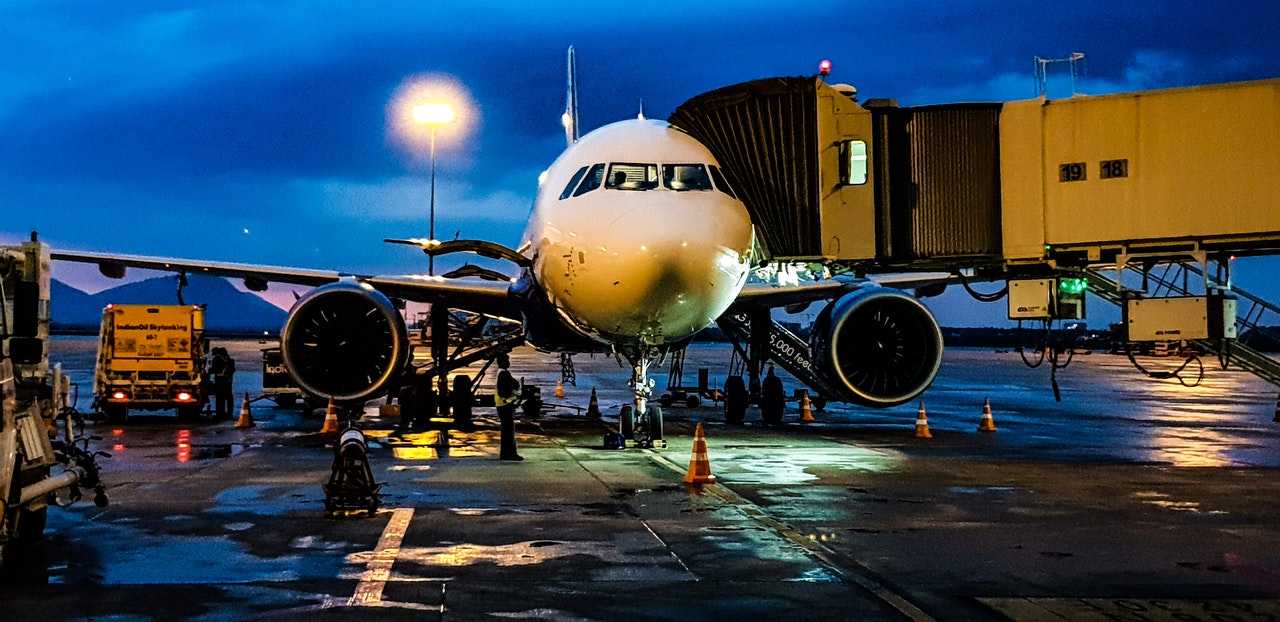Business to business (B2B) and business to consumer (B2C) ecommerce are projected to contribute Rp 1,908 trillion or nearly 34 percent to the Indonesian Digital Economy ecosystem in 2030.
The projection is based on the ongoing growth trend and on the contribution of the digital economy gross domestic product at Rp 632 trillion in 2020. Although that amount was relatively small compared to the national GDP at Rp 15,400 trillion in 2020, its growth was quite fast.
Trade Minister M. Lutfi said several prerequisites are needed to help boost Indonesia’s digital economy. Among them are human resource, talent and infrastructure development as well as improvement in business climate and ecosystem.
“Digital economy offers some benefits to the people, such as accelerating and easing transaction and improving information and transparency. But, there are many things to do to enable Indonesia’s digital economy compete against other countries,” the minister said at a Mid-Year Economic Outlook 2021 in Jakarta recently. The event was also attended by Finance Minister Sri Mulyani and Health Minister Budi Gunadi Sadikin.
Lutfi added the trade ministry was making use of the second wave of digital economy by creating digital ecosystem that facilitates production, logistic and transaction.
According to the minister, ecommerce sector has become one of Indonesia’ economic pillars amid the Covid-19 pandemic. “Ecommerce can become a pillar for Indonesia’s economy during the pandemic by utilizing the second wave of digital economy, namely 5G technology, internet of things, blok chain and artificial intelligence,” he added.
“The digital ecosystem does not only facilitate transaction but also production, logistics and technology,” Lutfi said.
He praised some breakthroughs in several sectors.
The presence of high-scale digital company can also play a role in developing digital ecosystem. “Digital company can invest in and produce skilled human resources,” he added.
Source: MadeInIndonesia.com
Original published date: 12 July, 2021
Read full article here https://madeinindonesia.com/ecommerce-to-contribute-rp-1-908-trillion-to-digital-ecosystem/
Indonesia has recently been a hotspot for data center investment. According to market research by Arizton, the country is expected to bring in investments worth over USD 1 billion at an annual growth rate of 11 percent between 2019 and 2025.
Well-known technology companies including Google, Microsoft, Amazon Web Services, Alibaba and Tencent have already set up data centers in Indonesia, or have announced plans to do so. We can only expect more companies to follow in their footsteps.
Against this backdrop, can data centers be carbon-neutral, or even net carbon-negative? Are green data centers a paradoxical concept?
Data center operators are working to drive down energy consumption to advance sustainability in their facilities and decrease costs. One way is to invest in energy-efficient commercial chiller equipment that offers competitive energy performance and proven reliability. Smart buildings technology providers like Johnson Controls offer advanced chiller equipment, which uses low global warming potential refrigerant and is optimized to reduce average annual electricity consumption by 35 percent. To push the envelope further, data center providers could even consider harnessing free-cooling chiller solutions, which include evaporative cooling technologies for even better energy efficiency.
Using digital resources and analytics is another way to optimize energy usage. In a typical data center, the servers’ load will vary throughout the day. A smart solution to monitor the energy consumption patterns allows data center managers to configure the optimal use of their resources, as well as to identify and diagnose equipment problems and take proactive steps to fix them. In some cases, smart chillers can reduce unplanned and emergency repairs by as much as 66 percent.
It’s also time to challenge the convention of operating data centers at low temperatures of 20 degrees to 22 degrees Celsius. Evidence supports the running of data centers hotter than they currently are (by 1 or 2 degree without any significant sacrifices in system reliability - and reap up to 5 percent savings in power consumption for chillers.
Sustainable energy sources should be considered to power data centers, wherever possible.
Finance Minister Sri Mulyani Indrawati projects the digital economy in Indonesia could increase to US$124 billion by 2025. Coupled with the government’s “Making Indonesia 4.0” roadmap which will put Indonesia among the top ten global economies by 2030, we can see the tremendous potential that the country has. By implementing digital transformation in various industries, this will inevitably drive the need for more data centers.
Source: The Jakarta Post
BANDAR SERI BEGAWAN — Enabling legal frameworks and inclusive policies are needed to realise digital transformation in Southeast Asia, Brunei’s Minister of Transport and Infocommunications (MTIC) said on Tuesday.
The “right legislative framework” can help brick-and-mortar businesses transition to e-commerce and provide e-services, said YB Dato Seri Setia Abdul Mutalib POKSSDP Hj Mohammad Yusof.
The minister was speaking during a virtual panel discussion on digital transformation in ASEAN along with his Singapore counterpart, Communications and Information Minister Josephine Teo, at the inaugural Asia Tech x Singapore Summit.
Spanning across four days, the summit gathered governments, global companies and communities to discuss the role of technology in shaping a shared digital future.
Noting that ASEAN members states are at different stages of technology development, YB Dato Abd Mutalib said some Southeast Asian nations do not have data protection laws or are in the midst of drafting regulations.
Policymakers in the region can refer to guidelines such as APEC’s digital transformation framework, he added.
Date of Release: 14 July 2021
Small and medium enterprises (SMEs) stand to benefit from digital tools to manage their finances and operations, as well as make strategic business decisions as the pandemic accelerates the use of technology, experts have said.
Adhitya Satriadi, the managing director of TMP Accounting, said on Thursday that there were plenty of digital tools in the market to help SMEs optimize their businesses.
Adhitya said the pandemic was giving SMEs the opportunity to digitize and better manage their finances throughout the pandemic, which has hit small businesses hard. Out of more than 60 million small businesses in Indonesia, only 13 percent have gone digital.
Micro, small and medium enterprises account for 60 percent of Indonesia’s GDP and 97 percent of the Indonesian workforce, according to official data. An estimated 5.5 million workers risk losing their jobs as a result of the pandemic, indicating the crucial role SMEs play in the Indonesian economy, The Jakarta Post deputy editor-in-chief M. Taufiqurrahman said in the webinar.
Gojek head of merchant platform business Novi Tandjung said a recent survey on its merchants in April indicated there was optimism over an economic recovery. Eight out of 10 businesses said they expected business conditions to improve in the next six months, according to the study.
Recognizing that the pandemic has forced small businesses to adapt, the government has partnered with tech-based companies to help 2 million small businesses establish an online presence.
Source: The Jakarta Post
Author: Dzulfiqar Fathur Rahman
Original published date: 10 July, 2021
Read full article here https://www.thejakartapost.com/news/2020/07/09/digital-tools-give-smes-opportunity-to-evolve.html
o Southeast Asia’s largest economy is now home to seven digital banks, with seven more waiting for licences
o The country’s large, young and relatively unbanked population gives the sector great growth potential, though low financial literacy may be a challenge
Competition in the digital banking sector in Indonesia is heating up as well-resourced technology companies muscle into the scene, capturing a chunk of the market share from large but typically rigid traditional banks.
Among the digital banks that are already up and running is Bank Jago, which is backed by Gojek. The Indonesian tech giant holds 22.16 per cent of the bank’s shares after purchasing around US$155 million worth of the bank’s shares last year.
Japanese tech platform Line has partnered the Indonesian subsidiary of South Korea’s Hana Bank to launch a digital banking platform, while Singapore-based Sea Group, Southeast Asia’s most valuable tech company, in January acquired Bank BKE for an undisclosed amount to transform it into a digital bank. Sea has also been granted a digital banking licence in Singapore.
Southeast Asia’s largest economy is now home to seven digital banks, with seven more waiting for licences from the Financial Services Authority (OJK). These digital banks are either operated by small banks after they were acquired by tech companies, or they are offerings from existing banks.
Either way, they are set to ride the wave of digital transactions in Indonesia, boosted by rising levels of internet penetration and digital literacy as well as a growing appetite for online and mobile transactions – particularly among the 145 million millennials and members of Generation Z who account for more than half of the country’s total population.
Source: South China Morning Post
Author: Resty Woro Yuniar
Original published date: 15 July, 2021
Southeast Asia is one of the biggest sources of plastic waste thanks to rapid urbanisation and a growing middle class, whose consumption of plastic products is continuously rising due to increasing purchasing power and desire for convenience. To make matters worse, during the Covid-19 pandemic, the use of plastics increased exponentially due to increased attention to hygiene, food delivery and takeaway packaging, and a jump in online purchases that require more packaging. This is alarming as plastic bags require approximately 10-20 years to decompose, while plastic bottles take around 450 years. However, among Southeast Asian countries there is cause for optimism. Thailand and Indonesia have recognised the importance of plastic waste management. Both countries are working on initiatives to reduce plastic waste with commitment to a greener future.
Thailand aims to have all plastic waste recycled by 2027, after making moves to ban the import of foreign plastic and electronic waste since 2019 and to eliminate the use of plastic bags at major retailers since last year. This is an ambitious goal as Thailand generates approximately 2 million tonnes of waste every year and the country's current recycling capacity is only 25%. The government needs to lay the groundwork for a better recycling system while raising people's awareness of the importance and methods of separating different type of waste.
To achieve this goal, the government recently approved a draft action plan to manage plastic waste by banning four types of products by 2022: plastic bags with a thickness of less than 36 microns, foam containers for foods (except shock-absorbing foam for industrial use), plastic beverage cups with a thickness of less than 100 microns, and plastic straws (except those in use for children, the elderly and patients). With this plan, the government aims to reduce plastic waste by 780,000 tonnes per year, which will bring it closer to the goal.
Like Thailand, Indonesia has set an ambitious goal to reduce marine plastic waste by 70% by 2025 and to get rid of all plastic pollution by 2040. Every year, Indonesia generates around 6.8 million tonnes of plastic waste, 61% of which is not properly collected and disposed of. To realise the plan, the government has issued regulations such as a requirement for packaging producers to reduce plastic waste production by at least 30% in 10 years. In the long run, the Indonesian government recognises that cooperation is key. For instance, the Indonesia National Plastic Action Partnership (NPAP) and the Ocean Plastic Prevention Accelerator (OPPA) formed the Informal Plastic Collection Innovation Challenge, inviting innovators from around the world to submit their solutions to solve the issue of plastic waste to support the government's ambitious goal.
It remains to be seen whether the Thai and Indonesian environmental initiatives regarding plastic waste reduction will be successful. However, the ambitious commitments reflect positive political intentions to live up to our responsibilities on the global stage.
Source: Bangkok Post
The nation’s research and development (R&D) spending will reach one percent of gross domestic product (GDP) by 2030 according to the government’s road map for science, technology, and innovation.
The meeting was attended by Cham Prasidh, Minister of Industry, Science, Technology, and Innovation, Veng Sakhon, Minister of Agriculture, Forestry and Fisheries, Chea Vandeth, Minister of Posts and Telecommunication, Mam Bunheng, Minister of Health, Sok Piseth, vice president of Cambodia Chamber of Commerce as well as members of the NCSTI.
The purpose of the meeting was to review, discuss, set direction and approve documents to support and promote the implementation of work in the field of science, technology and innovation in Cambodia. It also discussed and received input on further improvements as well as adopted the Cambodia Science, Technology and Innovation Roadmap 2030 in support of the country’s recovery from the global pandemic, according to the Cambodia Chamber of Commerce (CCC).
The CCC also stated that there were recommendations for the development of three priority technology sub-roadmaps, including ones for education, health and agricultural technology. According to preliminary research, Cambodia has 9,324 scientists and technologists with 2,297 women among that group.
Author: Chea Vanyuth
Source: Khmer Times
For full article, please read here.
Original published date: 09 July 2021
Cambodia exported $8.201 billion in the first six months of 2021, a 17 percent increase compared to the same period last year, according to a report from the Ministry of Economy and Finance.
The Kingdom’s primary export markets are the US, the EU, Canada, Japan, China, South Korea and the ASEAN nations.
Increasing exports are seen as an indication of positive signs in local production and manufacturing despite the pandemic, although the garment sector has taken a significant hit compared to other sectors.
Nguon Meng Tech, director-general of Cambodia Chamber of Commerce, said that export growth is the driving force behind positive activity among the production chains.
“It is a good result from the government’s efforts to push active production chains to [maintain] exports [generating] jobs and economic growth,” Meng Tech said.
Last year, Cambodia shipped garment, non-garment and agricultural products worth $16 billion, a 14 percent increase compared to 2019 results.
Author: Chea Vanyuth
Source: Khmer Times
Images credit: KT/Mai Vireak
For Full article, please read here.
Original published date: 19 July 2021
Interest in packaged sauces, dressings, and condiments has been rising in the United States (US), a big boost in retail as eating occasions of consumers, especially millennials, move into their homes amid the coronavirus and the restrictions.
The Euromonitor Digest said emerging and premium brands are still positioned for growth over the next few years with their expected renewed focus on innovative products as restrictions are lifted.
“When it comes to sauces, dressings, and condiments, consumers increasingly want to experiment with new products that can add flavor and excitement to their meals. The millennials are key drivers behind this trend, with younger generations placing a greater focus on experiences. Also, with a looming economic recession, pricing will remain an important consideration for many shoppers,” said the monthly online publication of the Department of Trade and Industry-Export Marketing Bureau (DTI-EMB).
The report said consumers may be willing to spend the extra money for a better product especially if they feel that they are saving money by not ordering foodservice.
“These contrasting demands could create space for the further expansion of private labels, with producers often able to deliver premium products but at more competitive prices than the equivalent branded options,” it added.
The Euromonitor Digest said private labels have also seen dynamic growth in 2020 due to the economic downturn, with its competitively priced pasta sauces attracting the interest of price-conscious households.
Moreover, the report said the shift in shopping behavior towards e-commerce could become permanent as many consumers have turned to e-commerce as a convenient way to stock up on groceries.
“Innovations on the part of the retailers to make online grocery shopping even more convenient will serve to boost e-commerce further over the forecast period,” it said.
It said the demand for convenience was a key growth driver within packaged food.
“As consumers will increasingly have busy lives, manufacturers had to make their products be more portable and should help consumers save time while still providing a good taste,” it added.
The Euromonitor Digest said the coronavirus disease 2019 (Covid-19) saw many consumers being forced to work from home, allowing more time to prepare and eat meals.
“However, once Covid-19 is contained and people begin heading back to the office and school, time-saving will likely regain its importance and consumers will again start seeking out ways to minimize the time spent on preparing meals. As such, shoppers will likely look into sauces, dressings, and condiments for support in creating quick, easy,
and tasty meals,” it said.
Source: PHILEXPORT News and Feature
The economic partnership between India and the Association of Southeast Asian Nations (ASEAN) has continued to strengthen since the economic relationship began in 1992 and with the ASEAN-India Free Trade Agreement (AIFTA) coming into effect in 2009.
The bloc has presented several opportunities for Indian manufacturers and exporters seeking long-term commitment. Total trade between India and ASEAN was valued at US$86 billion in 2020, a reduction from US$97 billion in 2018-19 due to the pandemic. However, this was an increase from the 2017 total trade value of US$59 billion, indicating an upward trajectory only arrested by the pandemic.
Furthermore, according to India’s Commerce and Industry minister, India-ASEAN trade has the potential to reach US$300 billion by 2025.
ASEAN is already the world’s third most populous economy and is projected to be the fourth-largest single market by 2030, with a GDP of US$7 trillion. Furthermore, domestic consumption is expected to reach US$4 trillion and the population too will rise to 723 million from 648 million currently.
Indian exports largely mirror those of ASEAN states, such as rice, electrical equipment, and clothing and accessories. However, there are still sectors where Indian exporters can potentially exploit market needs – wheat exports, the digital economy, and healthcare.
Source: ASEAN Briefing
Author: Ayman Falak Medina
Original published date: 2 July, 2021
Read full article here https://www.aseanbriefing.com/news/opportunities-for-indian-manufacturers-in-asean/
On June 2, 2021, the Association of Southeast Asian Nations (ASEAN) and the European Union (EU) agreed to the world’s first bloc-to-bloc air transport agreement through the ASEAN-EU Comprehensive Air Transport Agreement (AE CATA).
The AE CATA, once formalized, will bolster connectivity between the EU and ASEAN, which has been decimated by the pandemic. The agreement allows airlines of ASEAN and EU countries to fly any number of non-stop passenger and cargo services between the two regions.
In addition, airlines will also be able to fly up to 14 weekly passenger services with one-stop within the other region to pick up passengers on the return leg. There is no limit for cargo flights. ASEAN and the EU hope the agreement will make their respective airlines more competitive as their international airline routes are currently dominated by carriers from the Middle East.
Importantly, the AE CATA can increase cooperation in technical areas, such as aviation safety, consumer protection, air traffic management, and environmental issues.
The AE CATA can improve trade between ASEAN and the EU
Besides the liberalization of air transport, the AE CATA can strengthen reciprocal prospects for trade and investment between ASEAN and the EU.
ASEAN is the EU’s third-largest trade partner (after China and the US) with over 189 billion Euros (US$223 billion) worth bilateral trade of goods recorded in 2020, and 93 billion Euros (US$110 billion) worth bilateral trade in services recorded in 2019.
The EU is by far the largest investor in ASEAN countries. Some 313.6 billion Euros (US$370 billion) in foreign direct investment (FDI) stocks went to ASEAN members throughout 2019. Further, ASEAN investments into the EU have also steadily increased to a total stock of 144 billion Euros (US$170 billion).
Source: ASEAN Briefing
Author: Ayman Falak Medina
Original published date: 15 July, 2021
Read full article here https://www.aseanbriefing.com/news/asean-eu-agree-to-worlds-first-bloc-to-bloc-air-transport-agreement/
























